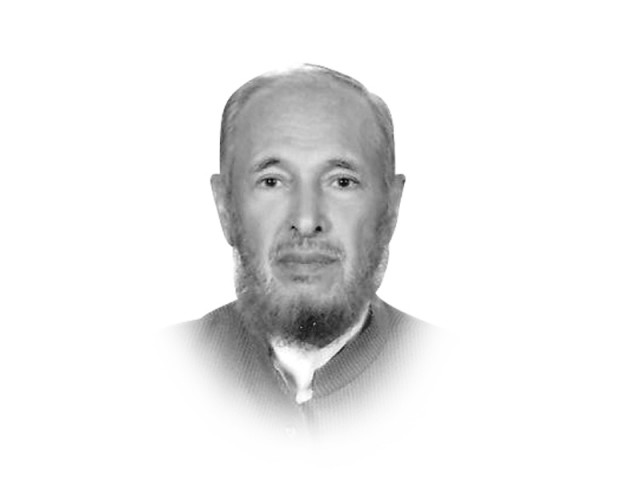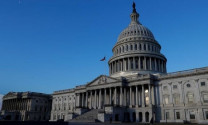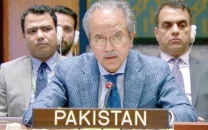Confronting the IS — preventing more Frankensteins
The IS first generated hope, then disappointment. The Sunni Arab monarchies saw a threat to their fiefdoms.

The US occupation of Iraq although camouflaged under the perceived existence of WMDs was intended to destroy the biggest military machine in the Middle East — one that could pose a danger to the state of Israel. The destruction of the country’s infrastructure was also accompanied by an irretrievable shift in its political and sectarian landscape.
This void, left behind by the removal of a regime, the systems which held the country together, was filled by the emergence of groups, mafias that were on rampage — plundering, attacking and looting with no fear of retribution. The regime of Nouri al Maliki began to advance a ‘sectarian’ agenda. This is the worst thing that could happen to a country already under foreign occupation. Polarisation followed and soon there was a collapse of order on a gigantic scale. A many-dimensional conflict ensued that would not only sap the vitality and strength of a country and its populace but also generate a whole series of ethnic and sectarian battles plunging the country and the region into a war with no goals and no strategies.
A somewhat similar catastrophe was being enacted in Syria. The Western countries, principally the US, had this paranoid mindset that the toppling of the Assad regime would help resolve most of the regional security issues besides, of course, making Israel safe from the assaults of Hezbollah, whose patrons and financiers are Iran and Syria. It was not realised that the very forces that were sponsoring would sow the seeds of discord and spread mayhem and anarchy that could pose a potential threat to their ‘vital’ interests in the region.
The IS phenomenon was almost a natural consequence of the vacuum, the atrocities of the factional militias inflicted upon one another under the watch of the diabolical Nouri al Maliki regime, the destruction of villages, towns, the displacement of millions from their ancestral homes. In the milieu in which the IS (formerly ISIS) was born, there was no room for concepts like tolerance, accommodation and understanding. The group soon challenged and swept away the vestiges of a broken order in parts of Syria and Iraq.
The group comprised frustrated and deeply-troubled Sunni extremists who were on the margins of a socio-economic and sectarian order that did not hold any promise for the majority of the people in the region. They soon began to espouse a philosophy of hatred based on the exclusion of those who did not share their ideals and goals. As they embarked upon a policy of challenging and confronting the state authority in both Syria and Iraq, they found whole bands of new adherents to their purported cause of ‘restoring the ethnic and sectarian balance that has been shattered by the upheavals of the last 11 years’. Muslims from different parts of the world began to flock to the region to enlist in what they thought a noble cause. They thought justice would soon prevail and the injustice would end.
The IS took control of banks, industries, oil wells and refineries, weapons, transport and military hardware, etc. That made them independent as far as resources are concerned. It declared one of its leaders ‘Amirul Momineen’ — the commander of the faithful. This was done to convey the message that a new Islamic State is born which would demand allegiance from all Muslims. Owing to the rallying cry of faith, many began to support this movement.
But soon there were many disappointments. The beheading of opponents and journalists caused a stir in the ranks of the movement for Islam does not permit such killings. Then the Kurds were targeted and there were huge displacements of people. This further alienated many well wishers of the movement. The destruction of property was without any valid reason. But more importantly, the supporters began to worry about the ultimate goal and objective of the movement. Because how could a movement that kills journalists, female professionals and causes the expulsion of innocent Muslims from their homes, claim to be heading towards the establishment of an egalitarian, welfare Islamic state? People soon began to break ranks with the movement.
The IS first generated hope, then disappointment. The Sunni Arab monarchies saw a threat to their fiefdoms. They rallied to oppose and confront the IS. They poured resources, mobilised their militaries, sought alliances in a bid to defeat the movement. That was understandable and natural. But people in distant lands were ‘alarmed’ — the United States began to see ‘mortal dangers’ from IS volunteers and decided to intervene to ‘save’ America from it.
The US and French bombing missions are obliterating whatever little is left of the infrastructure of the region. True, the bombs inflict damage on the movement’s arsenal and its treasure. That is one facet of the ‘second invasion’. But a deeper malaise is being caused yet again to the already tumbling political order. More zealots, more frustrated youth, more victims of the holocaust, would begin to emerge from the ashes of a collapsing IS, causing more violence, more instability and more chaos.
The regional countries which have a stake in the situation could have promoted a more harmonious response to the challenge the IS poses. With the West intervening in the crisis, suspicions are bound to be raised in Iran — a key ally of Bashar al-Assad. The West certainly does not want to give respite to the Syrian regime and yet that regime is also fighting the IS. Iran is supporting the Shia majority regime in Iraq which is also fighting the IS. The Sunni Arab monarchies are fighting against both IS as well as the Assad regime. Such a complex conflict would inevitably cause a stupendous and destructive reaction that will be immeasurably difficult to handle or contain .
The Middle East is in the grip of another fatal cycle of violence. The region and its people would bear the scars for generations. The only beneficiaries are Israel and the factories producing weapons in the West.
Published in The Express Tribune, September 29th, 2014.
Like Opinion & Editorial on Facebook, follow @ETOpEd on Twitter to receive all updates on all our daily pieces.



















COMMENTS
Comments are moderated and generally will be posted if they are on-topic and not abusive.
For more information, please see our Comments FAQ